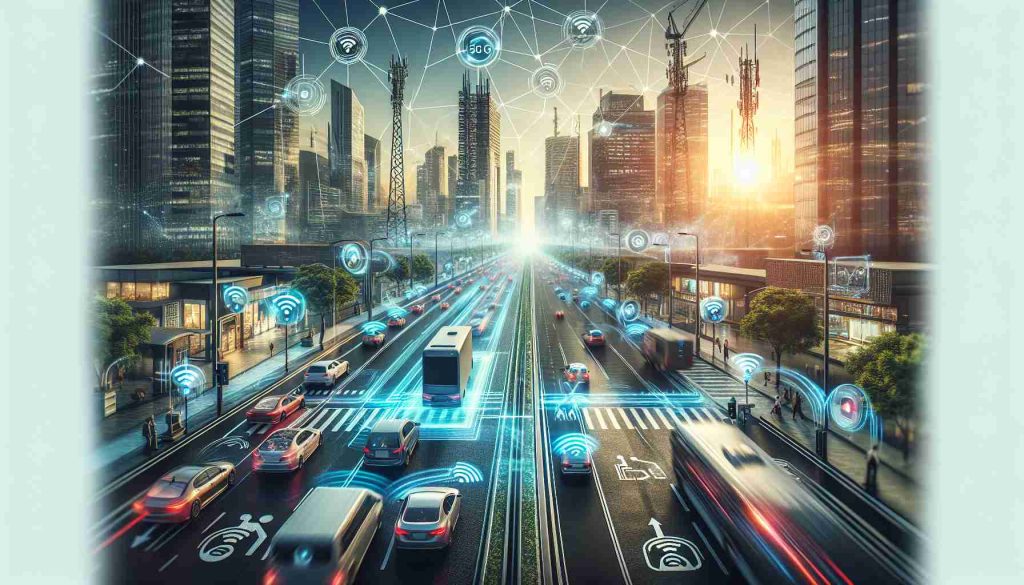
Picture this: a future where your car not only talks to you but communicates with every vehicle around it. Traffic jams are as archaic as flip phones, and your daily commute is a symphony of perfectly synchronized automotive technology. This future isn’t powered by some mythical force; it’s driven by the power of 5G technology.
You’ve probably heard the buzz around 5G for a while, but when it comes to the roads we travel on, it’s more than just speed—it’s about a seismic shift in how we think, drive, and travel. Let’s embark on a journey into the unexpected and often astonishing ways 5G is set to overhaul our driving experience.
Imagine the scene: you’re cruising along the highway when suddenly your car receives a burst of data from the cloud (a href=”https://cloud.google.com”>Google Cloud) informing it of a potential hazard two miles up the road. Before you can even process the information, your car has already adjusted its route and speed, thanks to vehicle-to-vehicle (V2V) communications, which allow your four-wheeled companion to chat with its peers on the road.
These automotive chats will lead to a dramatic downturn in traffic accidents, many of which are caused by human error. But just how significant is this transformation? The (a href=”https://dot.gov”>U.S. Department of Transportation) suggests that V2V could reduce accidents by as much as 80%, creating a world where the term “fender bender” is nothing more than a quaint colloquialism from a bygone era.
Furthermore, 5G isn’t just concerned with safety; it’s set to pimp your ride’s brains. Advanced driver assistance systems (ADAS), which currently rely on a combination of sensors and camera data, will become supercharged. 5G will enable these systems to access a wealth of real-time information from other cars and infrastructure, transforming them from reactive to predictive technologies.
But wait, there’s a layer here that’s often glossed over: cybersecurity. Each year, cars are becoming more like computers on wheels, and just as your laptop is susceptible to cyber threats, so is your car. With the introduction of 5G, automotive cybersecurity will take a leap forward. The new networks will be fitted with mighty firewalls and sophisticated encryption, strengthening the integrity of our vehicles against digital pirates (a href=”https://nhtsa.gov”>NHTSA).
As for the skeptics wondering about the feasibility and availability of this tech, let’s not forget that rolling out 5G is akin to building the roads in the first place; it’s the next step in our journey. The process has already begun, with countries across the globe laying the foundations of this tech revolution (a href=”https://gsma.com”>GSMA).
It’s not only about the cars, though. Think of the factories where they’re born. 5G’s blisteringly fast data transfer speeds and low latency mean machines can communicate in near real-time. This connectivity could lead to a new era of automation, where robots on the assembly line can share performance data, reducing errors and increasing productivity.
This is a world where your car no longer just takes you from point A to B—it’s an oasis of connectivity, where each vehicle, traffic light, and road sensor is part of an intricate dance choreographed by an invisible network of data. Your car evolves from a mere mode of transportation into an intelligent, self-aware mobile unit capable of making split-second decisions based on myriads of data points.
So, buckle up and prepare for this thrilling ride. The era of 5G connectivity will usher us into a future where the road is not a chaotic wilderness to be navigated but a smooth, seamless, and secure path towards an optimized, connected world. Welcome to the future of transportation, where “on the road again” means something entirely different than it did just a few years ago.
[embedded content]

Marcin Frąckiewicz is a renowned author and blogger, specializing in satellite communication and artificial intelligence. His insightful articles delve into the intricacies of these fields, offering readers a deep understanding of complex technological concepts. His work is known for its clarity and thoroughness.
